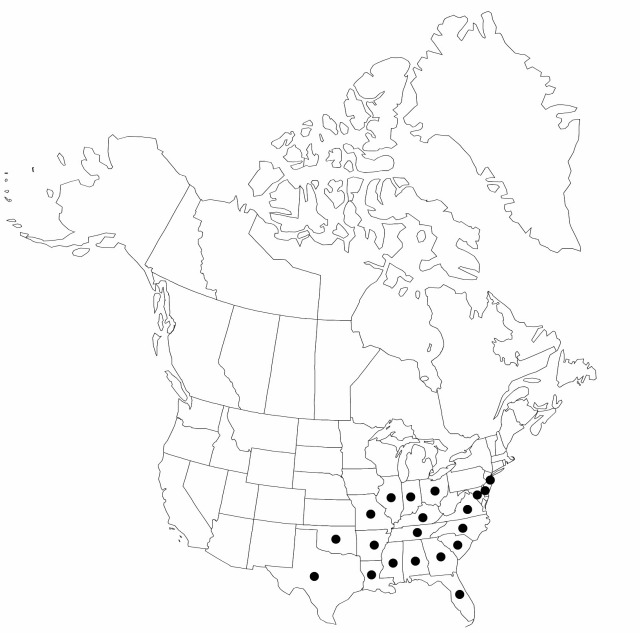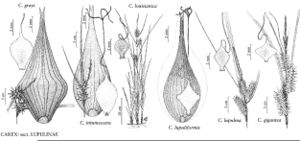Carex louisianica
Bull. Torrey Bot. Club 20: 428. 1893.
Plants loosely colonial, long-rhizomatous. Culms erect, 20–75 cm. Leaves 4–10; basal sheaths reddish to brownish; sheath of the distal leaf 2–10 cm; ligules rounded to triangular, 2–7 mm; blades 10–40 cm × 2–6 mm. Inflorescences 10–42 cm; peduncles of proximal spikes 0.5–10.5 cm, basal 2 peduncles 2–10 cm apart; of terminal spike (3–)6–18 cm, exceeding the distal pistillate spike by 2–12 cm; bracts leafy, sheaths 0.5–5 cm; blades 10–30 cm × 2–4 mm. Spikes: proximal pistillate spikes 1–3(–4), separate, 10–30-flowered, ovoid, 1.5–4.5 cm × 1.5–3 cm; terminal staminate spike 1, 0.5–7 cm × 2–3 mm. Pistillate scales 3–7-veined, lanceolate-ovate, 4.5–6.5 × 1.5–2 mm. Anthers 3, 3–4.5 mm. Perigynia narrowly ovoid, 10–14 × 3.5–6 mm, shiny, glabrous; beak conic, 4.5–7 mm. Achenes broadly stipitate, rhomboid, flat faces, angles thickened, 2.5–3.5 × 1.7–2 mm; style same texture as achene.
Phenology: Fruiting late spring–summer.
Habitat: Swamp forests, forest openings
Elevation: 0–400 m
Distribution

Ala., Ark., Del., Fla., Ga., Ill., Ind., Ky., La., Md., Miss., Mo., N.J., N.C., Ohio, Okla., S.C., Tenn., Tex., Va.
Discussion
Selected References
None.
